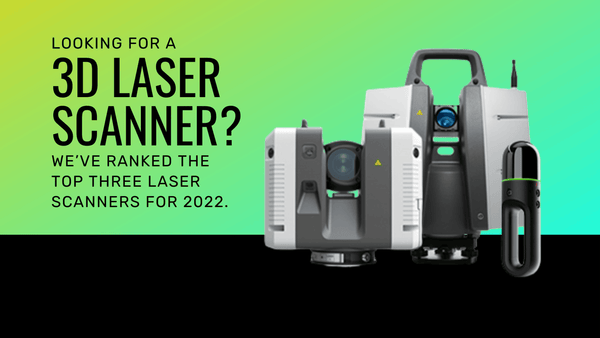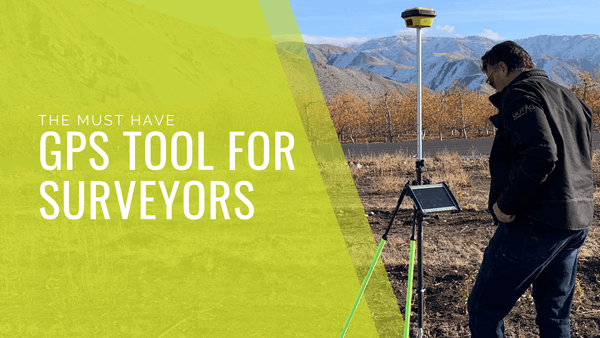Laser Scanners and Digital Twins: How Companies Are Reaping the Benefits
Digital twins are becoming more commonplace as we become familiar with their powerful capabilities. Digital twins allow for remote communication in a time where we need it most. Additionally they allow for scenario simulations in a variety of fields and act as a guide for manipulating and simulating physical objects and processes (in the real world). Digital twins are often the product of 3D laser scanners and 3D surveying equipment that only seem to be getting more powerful by the day.
In the space and automotive industries digital twins are being used to increase manufacturing efficiency and to identify potential part failures early on. In the healthcare industry they’re being used to create wearables and assess surgery risks. There is even speculation that the digital twins ability to predict how a product or system will perform in the future may bring digital twins to the beauty industry.
In the most basic of explanations, a digital twin is a bridge between the physical and digital world — digital twins are a virtual representation of a physical object or system. A working mirror.
How Does Digital Twin Technology Work?

3D simulations of physical objects or systems are created using a myriad of technologies and partnered with human interfaces, like AI or VR, to understand the output. At Datum Tech Solutions we work with 3D laser scanners to create point clouds of physical spaces and objects for engineering, architecture and construction purposes. Point clouds in conjunction with sensors create a working digital twin that can be tested and manipulated with accompanying software solutions.
The simplest way to explain how digital twin technology works is to use a real life example. Let’s use the restoration of a physical space, for example. Digital twins can assist architects, engineers and builders in determining restoration specifications, how the restoration will be completed, which materials should be used and how to plan and implement any regulatory provisions.
Datum Tech Solutions recently partnered with Seattle-based Heliotrope Architects and DeLaurenti Food & Wine in Seattle’s iconic Pike Place Market to employ digital twin technology in the restoration of the former iconic newsstand that shuttered its doors in 2019. The team used a Leica RTC 360 and accompanying Jetstream software to create a point cloud of the space. This case study will give you a good idea of how three different companies with separate but unified objectives came together to ensure the preservation and historical provenance of one of Seattle’s most loved places.

Understanding the Value of a Digital Twin
Digital Simulations
Understanding and researching scenarios for enterprising and innovative solutions and possibilities is made simpler with a digital twin. Let’s say for example a diverse team of vendors wants to determine which tweaks to a car engine will make it perform better. Prior to digital twin technology these vendors and partners would need to make the changes to the engine itself and test the output. These changes are costly, require numerous players and take time and money to perform. With a digital twin these changes can be created, simulated and tested virtually allowing all interested parties to study system performance, innovate and improve the engine and its performance quickly and efficiently.
Reduce Labor
Late stage design changes can be minimized with the use of a digital twin in turn reducing labor. Dynamic modeling and simulation tools made available by digital twin technology mean that teams can make decisions based on simulations that decrease the likelihood of late stage changes or revamps in the design and implementation process. When changes to a product or system can be made early on during the conceptual and design phases as opposed to the integration and commissioning phases labor and costs are reduced significantly.
Minimize Carbon Footprint
Digital twins are reducing carbon emissions in the construction industry. Digital twin technology is helping commercial and residential buildings reduce carbon emissions by “retrofitting existing buildings and future builds” in the construction industry. Thousands of data points in conjunction with sensors allow developers and retrofitters to make decisions about a building’s energy options early on in the process of reducing carbon emissions. Real time operational data can be transformed into actionable insights allowing teams to make educated decisions on reducing carbon emissions in the building industry. Simulating multiple designs and testing design alternatives is made simple with digital twin technology.
Reduce Material Waste
Digital twins are tackling the issue of waste in the building and manufacturing industries. It’s not just CO2 emissions that are getting kicked to the curb. Simulations powered by digital twin technology are helping businesses large and small find ways to save energy and optimize energy consumption. When operations are streamlined they become more efficient and efficiency leads to less wasteful processes and procedures.
Companies can also monitor certain pollutants and greenhouse gases using digital twin technology which in turn can lead to companies opting to make different decisions about their outputs of harmful emissions.
Production waste can also be minimized using digital twin technology and in some cases almost obliterated entirely. Digital twins can help businesses pinpoint production irregularities or detect them in advance. Digital twins are reshaping the way companies think about waste and offer viable, cost effective solutions to waste.
Improve Remote Communication
Whether you’re in the engineering, construction, automotive, aviation or tech industry remote communication, especially in 2021, is incredibly commonplace and necessary for projects to get performed properly, on time and within budget. With the use of digital twin technology teams in different time zones can work in tandem on projects of all shapes and sizes. Our team here at Datum Tech Solutions is able to employ digital twin technology to communicate with boots-on-the-ground teams in other parts of the world.
What Challenges Does A Digital Twin Solve?


Digital twins allow for improvisation, consistent communication, resource preservation, budget minimization … the list goes on. There are very few industries who aren’t taking advantage of digital twin technology and it’s myriad of benefits. From predicting necessary maintenance on equipment, systems and processes to connecting global technology systems, digital twins are becoming ever more powerful and robust. Digital twins can bring together large swaths of data from multiple systems and sensors giving teams unique contextual capabilities like never before.
If your team is looking to bring a new perspective to an existing or future built environment our team at Datum Tech Solutions has the expertise, equipment and software you need to get started. We have teams across the nation with varying backgrounds ready to tackle any project in the architecture, engineering or construction field.




